Angelina Lo-Chui greets me at the entrance of her 12th-floor art studio in Central. A group of children parade past us, waving goodbye. It’s raining outside, but in here it feels like sunshine. This is CreativeKids, a wonderland for children bursting with stories to tell and art to make.
Angelina, known affectionately as Auntie Angie to her students, founded CreativeKids in 1991. A pioneer in changing the perception of art education in Hong Kong, CreativeKids was one of the earliest—if not the first—children’s art studios in the territory.

As Angie gives me a tour of the studio, she’s exactly as we remember her 25 years ago: effervescent and full of energy. She flits from an enormous papier-mâché toadstool to a tactile ‘sensory wall’ made from wet-wipe lids before darting over to a shadow puppet theatre to show off some of her students’ latest work.

It’s clear Angie is having as much fun as the children here today working on their paintings, architectural models, and collages. The studio resembles the set of a Michel Gondry film: it’s the sort of place that urges children to let their imaginations run wild.
But what was there in the way of nurturing children’s creativity 30 years ago, before Angie started CreativeKids?
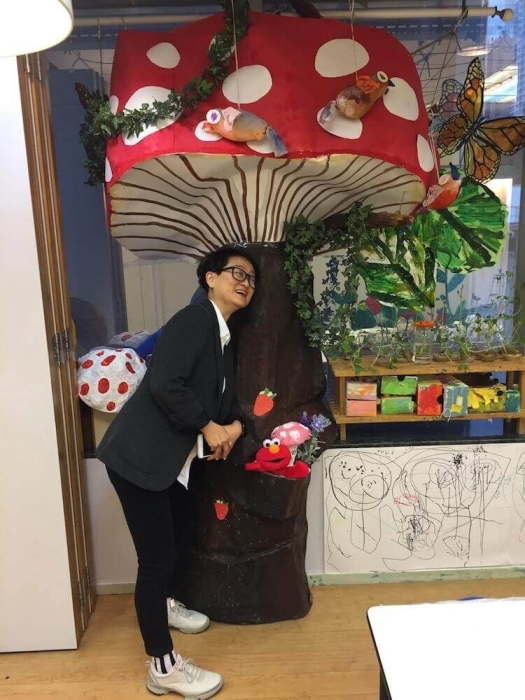
A very brief history of art education in Hong Kong
Angie was four years old when she discovered her father at his desk one night. ‘He was sketching a portrait of me from a photograph.’ Little Angie began to create artwork of her own, which quickly drew words of encouragement from others. ‘I drew an ice-cream on a cone and received compliments. In kindergarten, my teacher told my mom that I had created a pipe (for smoking tobacco) with play-dough and that she thought it was interesting.’
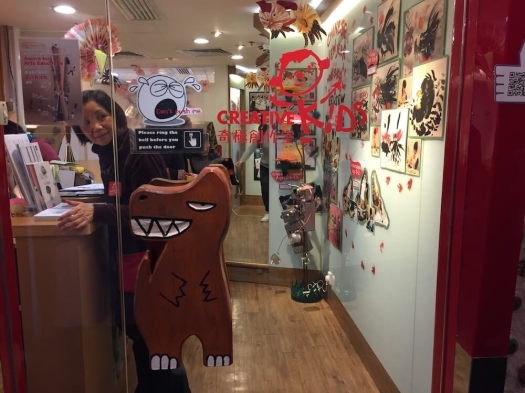
At the time, formal art training in Hong Kong consisted of copying famous works of art—although one teacher arranged objects in a still life to teach the concept of light and dark. Other than copying photos of celebrities and—like many other Hong Kong children—taking piano lessons, Angie received no art education until she attended college in the United States, where she graduated with a Bachelor of Fine Arts degree from the University of Hawaii, Manoa. There was little in the way of nurturing her creativity in Hong Kong.
When it comes to extracurricular activities for Hong Kong children, creativity and the arts have traditionally been regarded as less important than the ‘holy trinity’ of subjects: 中, 英, 數 (Chinese, English, and Maths). But times have changed, and parents today understand that creativity is critical to their children’s development.

Art time with Auntie Angie
The first incarnation of CreativeKids began in the late 80s at Angie’s kitchen table. At the time, many of her friends would send their children to make art with Auntie Angie. It didn’t take long for Angie’s home to brim with children—very happy children, at that—and for Angie to recognise that she loved teaching children art.
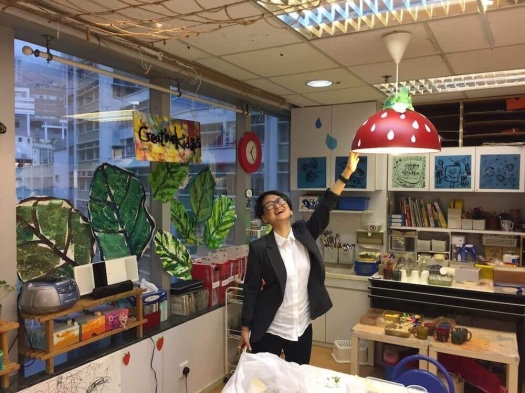
The excitement of teaching art was so intense that I lost sleep over it.
‘The excitement of teaching art was so intense that I lost sleep over it. I used to get so excited over what I could teach the week after!’ Angie’s artmaking sessions with the kids soon transformed into the ethos that drives her work at CreativeKids to this day. ‘It is a creative environment, both inner and outer, that allows youngsters to discover, experiment, express, communicate, and construct knowledge. CreativeKids is a piece of art that I started to sketch, shape, and perfect as a lifelong passion. I poured my ideals, dreams and purpose into it, and hope to help bring out the best in every child through visual art.’
… a creative environment … allows youngsters to discover, experiment, express, communicate, and construct knowledge.
Gradually, Angie found like-minded teachers covering every discipline—from painting to sculpture, advertising to architecture—to join her team. CreativeKids now operates a studio in Central, another in Tai Koo, and a social enterprise art education centre in Mei Foo called IM Creative. Angie is currently undertaking a PhD research study on children’s creative development through design education to underpin what she has been doing intuitively for years.
Do Angie’s students become starving artists?
After more than two decades of teaching, Angie is all too familiar with the anxiety many parents associate with the arts. ‘The “Bohemian lifestyle” of some artists really scares a lot of parents. Most people are fearful of the uncertain prospects that come with art-related education. Parents know that creativity is important, but most children are bogged down by academic pursuits.’
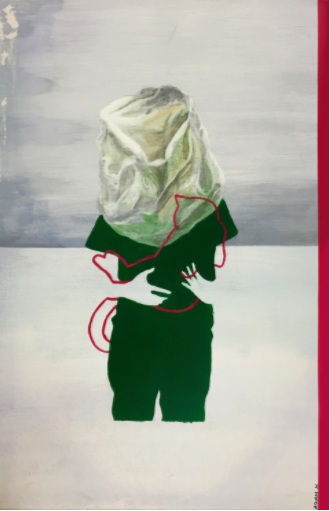
Are parents right to be fearful of an art-based education? Are Auntie Angie’s former students now tragically unemployed artists?
‘We have students who are engaged in different professions and in all walks of life [who] use art as a form of enrichment.’ Though Angie refrains from pushing her students down certain creative paths, she tells me: ‘I have been pleasantly surprised over and over again. Many of our students have grown up and are engaged in the creative industries like architecture, music, design, animation, [and] design consultancy. Some are entrepreneurs, and their creative mindsets do make a difference.’
And who better to prove that an early education in art is not a direct path to unemployment than some of Auntie Angie’s first students? Here are some anecdotes.
Justin Chang, Business Development Manager, Ascot Chang
Justin Chang took classes at CreativeKids from the age of five through to his early teens. Today Justin works for his family’s bespoke shirtmaking and tailoring business, Ascot Chang.
Justin says, ‘Auntie Angie and CreativeKids played a tremendously large part in the development of my appreciation for art, colour, and design. Whether I’m picking out fabrics for next season’s collection, evaluating the fit of a garment, or participating in the creative direction of the brand, if it weren’t for CreativeKids, I would not be able to do what I’m doing now.’
Aesthetic development aside, Justin feels the most important lesson imparted by Angie goes a bit deeper: that we must engage with the world with an inquisitive spirit. ‘CreativeKids taught me how to approach a problem, a question, or a project brief with a mindset of exploration and fun. In the real world, not all solutions can be derived from formulas, and often you need to look at problems from different perspectives to find unexpected solutions.’ On top of this, Justin adds that CreativeKids was great fun.
Jessica Chong, software engineer
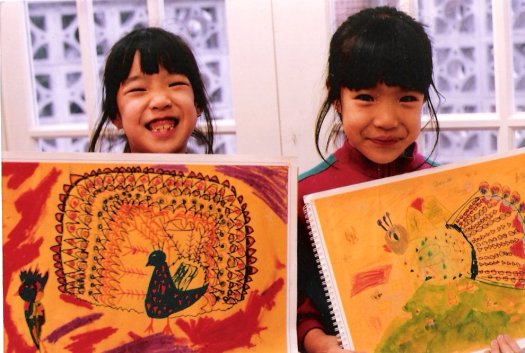
Jessica Chong and her twin Justina spent Saturdays at CreativeKids until their family left Hong Kong. Jessica says, ‘My twin Justina and I used to fight in our CreativeKids class. We were a nightmare. Instead of putting us into separate classes, Auntie Angie put the two of us in a room alone together to work on our own project. The papier-mâché sculpture pictured below came out of our twin jam sessions.’
‘I remember that we both felt indignant when we were first put in the room, away from all our friends. But as Justina and I got to work, we discovered that we enjoyed working together. We didn’t fight! I remember distinctly that we had absolutely no plan, and that the sculpture came to life on its own.’
‘From this experience,’ Jessica adds, ‘I learned that making art can heal the soul. There was a fire inside us that was making us lash out at each other in class, ignoring the pleas of our parents, friends, teachers. Instead of snuffing out the fire, Auntie Angie knew that we could use it to power our creativity instead. I also learned that the spontaneity of creation gives life!’
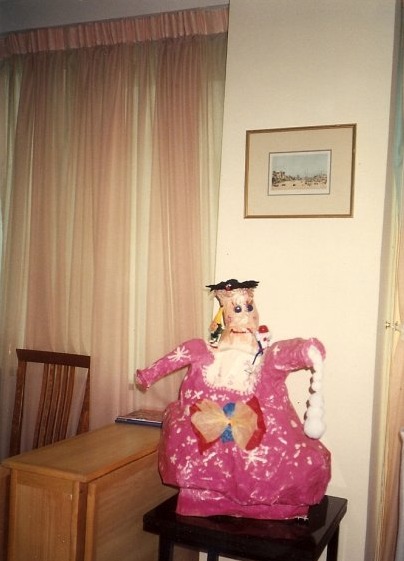
Today Jessica works as a software engineer in San Francisco. She continues to draw, write, and knit.
Justina Chong, not a starving artist
Justina Chong wonders if her experience at CreativeKids tilted her career trajectory as an adult. She has worked at a library and a museum, written scripts for children’s television properties, and today works in marketing for a tech company. ‘CreativeKids introduced me to the joy and terror of making things. I remember realising that I would never be able to make a perfect copy of a strawberry Auntie Angie had painted in my sketchbook. This idea disturbed me, sure, but it was soon eclipsed by the joy of creating things. Magic! I think those early creative experiences taught me to take risks, make mistakes, and express my ideas without being afraid.’
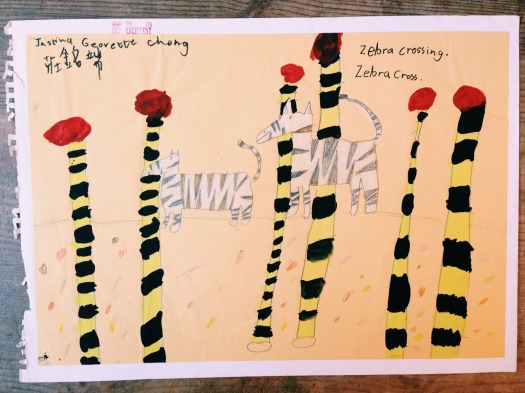
‘I still love making things with my hands and making up stories and silly characters,’ says Justina. ‘I sew and knit my own clothes, draw a bit, write on my blog, and make up characters and adventures when I feel like it.’
A parting word from Justina: ‘A lot of people are all like, “I can’t draw!” But who says you can’t draw? And who cares, anyway? Just draw!’
The point is not to teach art per se
To assume that the CreativeKids mission is to groom the next Monet, Picasso, or Ai Weiwei would be to miss the point. The primary motivation for Angie and her band of painting pedagogues seems to be to instil the values and qualities gained in the process of creating art rather than teaching art itself.
Says Angie: ‘My hope for [my students] is that their aspirations in life be realised through an art-enriched childhood. I hope what we experience with them in the creative process during their childhood and adolescence will translate into a positive mindset that equips them throughout their lives.’

Lifestyles of the tragically ‘uncreative’
Sadly, many individuals reach adulthood having never engaged in the arts, which might make you wonder: Is there such thing as an ‘uncreative’ person?
Angie doesn’t think so. ‘I would say that there are “creatively-obstructed” people, [and] they [should] acknowledge and believe that they too have been bestowed with this human potential [to be creative].’
Angie believes creativity can be switched on at any time in a person’s life. ‘It is a fire that may have diminished inside but can definitely be rekindled. It takes courage to face up to changes.’ In this vein, CreativeKids has organised an adult art volunteering initiative called Art Squad, as well as a learning program called Creative Adults.
[Creativity] is a fire that may have diminished inside but can definitely be rekindled.
‘The key is to immerse ourselves in cultural and creative events and activities and to be among creative minds. There really is such a thing as “group genius” when the sum is bigger than the parts. Adults need to leave their comfort zones and routines and venture into uncertain areas. Creativity is a mindset, a state of being, not something external to put on. So of course adults can be more creative! They just need to learn from the children!’
And so we leave you with this gem:
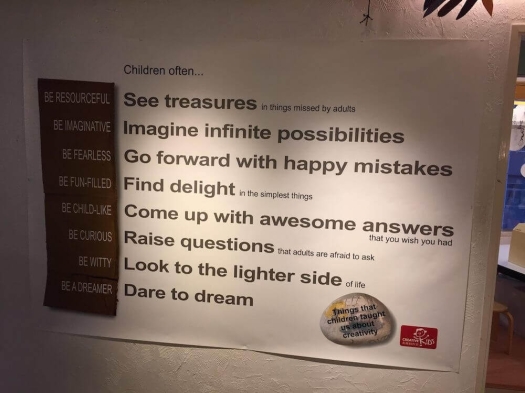

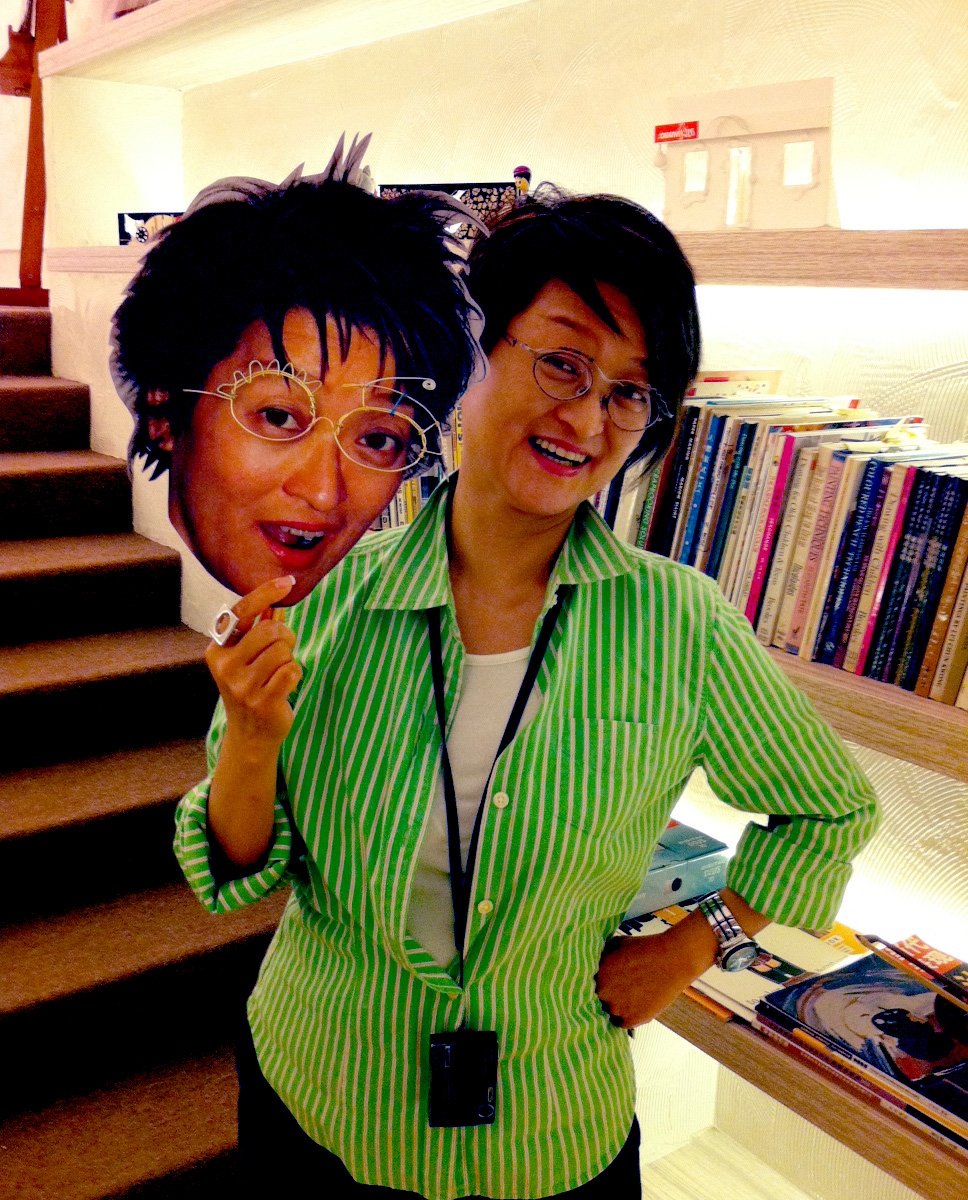
lovely writing and so true.
Thanks for sharing